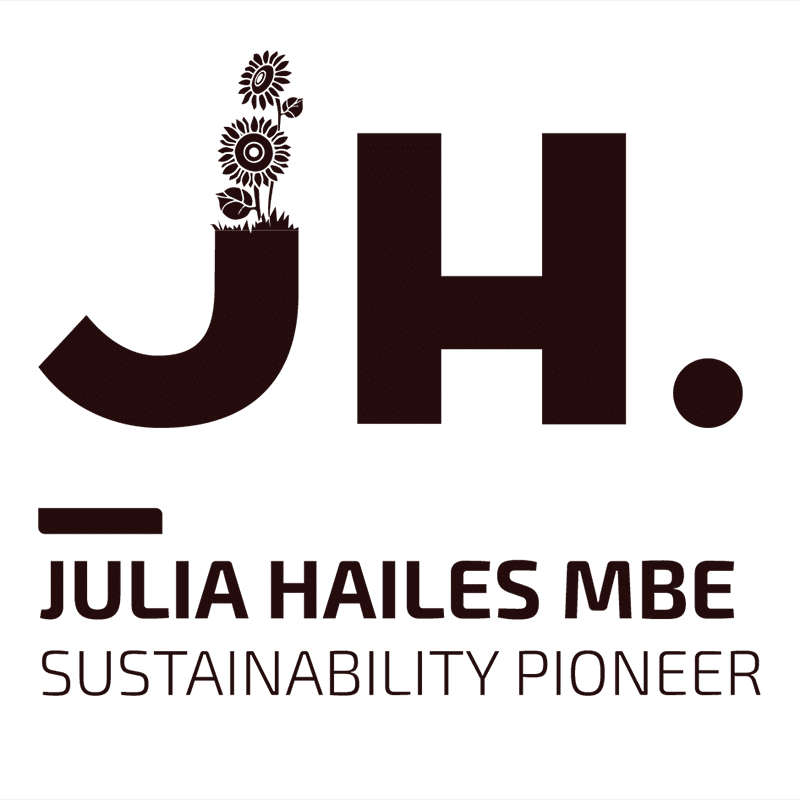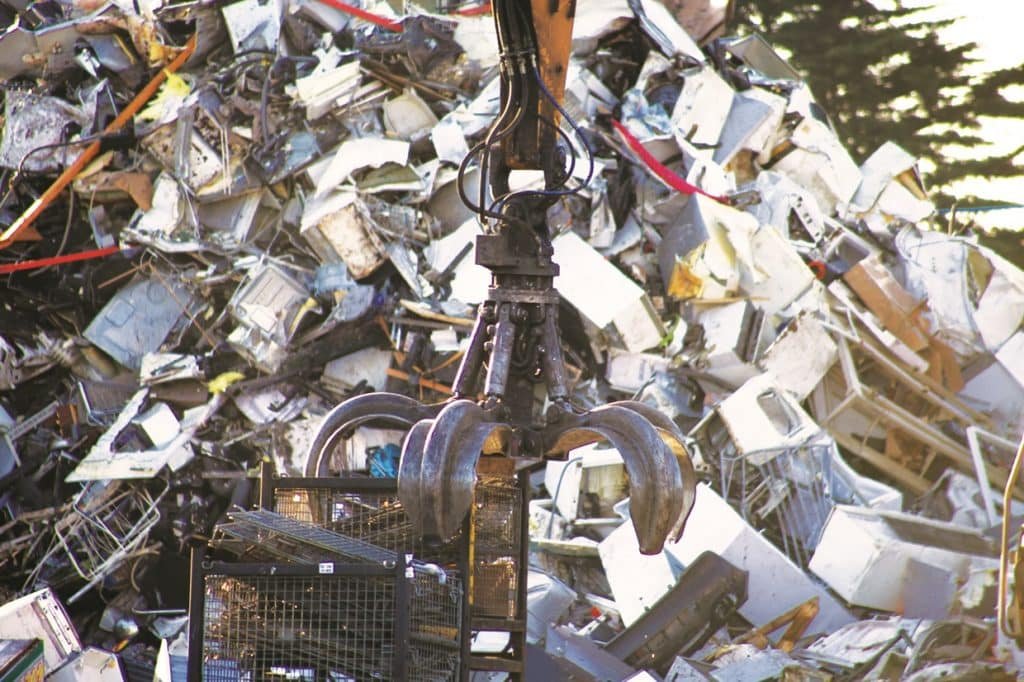I’m rather surprised to discover that there are quite a few people who don’t know what E-Waste is. I mentioned our E-Waste Campaign, when I was speaking to a large audience last week – and someone asked me to clarify. That wasn’t the first time. The ‘E’ stands for electronic. And it covers anything from waste computers, to fridges, hairdryers, lamps and electric drills. A term more widely used by the industry is WEEE – Waste Electrical and Electronic Equipment.
Whatever it’s called, there’s far too much of it. Our disposable society spews out electronic equipment as if it’s as worthless as an apple core or a banana skin. Most of it still ends up on landfill sites – unceremoniously dumped. Some of it is recycled. But what this generally means is that it gets put into huge crushing machines and smashed up into lots of little bits. The different materials are then separated and recycled – but some of the valuable materials get lost in the process.
It would be far better if more E-Waste could be re-used. But the government have set a pathetic target of re-using 5% of what’s collected – and remember this is only an aspiration!
I went to Grantham last week to visit a company called EnvironCom (website still under construction). If I’d been only a year ago, it would have been no different from other E-Waste recycling plants. Now, it’s very different. They’re re-using 15% of the stuff they bring in and they aim to increase this to at least 30% within 2 years. Perhaps even more impressive is that they’ve done this by almost doubling their employees and turning the company from a significant loss to £1m profit, in nine months.
This transformation has been brought about by Sean Feeney. He took over as CEO in January 2011, having previously worked for Dixons, which coincidentally is one of EnvironCom’s biggest customers. He says that his experience in Norway helped shape his thinking about E-Waste – actually, it made him ashamed to be British. Over there, all waste electronics are banned from landfill sites – so there are really good systems for both re-use and recycling.
One of the worrying things about recycling in this country is that there’s actually a perverse incentive for manufacturers to prevent it happening. Regulations mean that companies have to pay for recycling. How much they pay depends on their share of the market. So, for example, if a manufacturer sells 10% of TVs in the UK, they will pay 10% of recycling costs for any TVs collected.
The problem with this system is threefold. It means that the more that’s collected for recycling, the higher the costs to the companies. It means that companies producing good quality merchandise that lasts don’t get any benefit of producing less waste. And it means that there’s no benefit in re-using equipment because anything that’s sold could reduce sales of new stuff.
Going back to EnvironCom. Sean says that their objectives are: 1. To re-use as much as possible 2. To re-use parts if they can’t re-use the whole machine and 3. To make sure that everything ends up in the right place.
I asked him about exports. This is a real problem for E-Waste – much of it is illegally exported and ends up in toxic dumps in developing countries. Even stuff that’s exported within the rules can be a problem because it’s difficult to be sure exactly what happens once it’s left our shores. Sean explained that EnvironCom did export E-Waste to Africa but they were planning to stop this by the end of this year. Having spoken to him since my visit, he says he’s brought forward the deadline to the end of October! I was impressed.
Most of the repaired household goods, such as fridges and washing machines, from EnvironCom are sold by British Heart Foundation shops. I saw the repair workshops on site. Piles of spare parts – and machines ready to be re-sold. I decided that when I need to replace equipment in my house, I’ll be buying a refurbished one. It’s cheaper, greener – and they have a 6 months guarantee.
Probably the most surprising thing about my visit to EnvironCom was to hear about the quality of some of the things they receive. For example, they’ve had lots of Ipads – even an Ipad 2, which was launched in March 2011! And Sean’s expecting quite a few more in January 2012, when the Ipad 3 comes out.
One of Sean’s inspiring ideas has been to give one of these ‘waste’ Ipads to any member of his team that’s committed to go paperless! He’s also opening a new plant just outside London in October. I’m sure it won’t stop there – this is a company doing the right thing and reaping the rewards.




Nice post and a really good inspiring e-waste company leads on re-use. Thanks for sharing and you can also check recycled products
Hi,It is very informative and very helpful on my research regarding seo techniques. Thanks for sharing this post.
E Waste Recyclers in India
Thanks for the info on E-waste Company. I appreciate your insights and advice!
The market of e-waste recycling in India is very big because the world’s e-waste reach to India. These e-waste cause diminishing natural resources, damaging of environment and health of the poor people working in this industry.
Scrap Dealers in Chennai
E Waste Recycling Services in India
It is really a good topic you have chosen. Yes, I have little bit knowledge about E-waste is waste basically any electrical or electronic gadget also paper shredding , plastic Recycling , cardboard recycling it can be anything that has arrived at its end-of-life. Improper recycling and disposal can result in dangerous health and environmental problem.
Great post! It includes almost all important information about E-waste. This blog is very useful for people whose want to make good human health and keep clean the environment.
Thanks for your correct information,you are providing some good helpful information.Thanks a lot.e waste recycling company
IT Ewaste offers Electronic Recycling, Computer Laptop Recycling, Mobile Phone or E Waste Recycling Services.
It is also good idea for avoiding the e-wastes and also it reduces the material cost.
Great Informative blog..thanks for share with us.
Now a days waste is very big problem for human health… So we need waste management services and environmental services for good human health and keep clean the environment.
Interesting. So British Heart Foundation is the place to go at the moment and presumably in the future there will be more outlets?
Go to British Heart Foundation website to find nearest place to buy re-used electricals. http://www.bhf.org.uk/shop/our-local-shops.aspx
At the moment it's not that easy making sure that your waste electricals get repaired for re-use – or even recycled. It depends on your local authority. However, this is something I'm hoping to address. Watch this space!
Hi Julia,
Thanks for the article. Key to increaasing re-use percentages must be the development of a market demand. Is there anything being done to setting up a channel to allow consumers to buy re-used equipment? My dishwasher has just gone on the blink and I would have no idea on how to buy a 'reconditioned' machine assuming mine is not viable for fixing.
Interesting. So British Heart Foundation is the place to go at the moment and presumably in the future there will be more outlets?